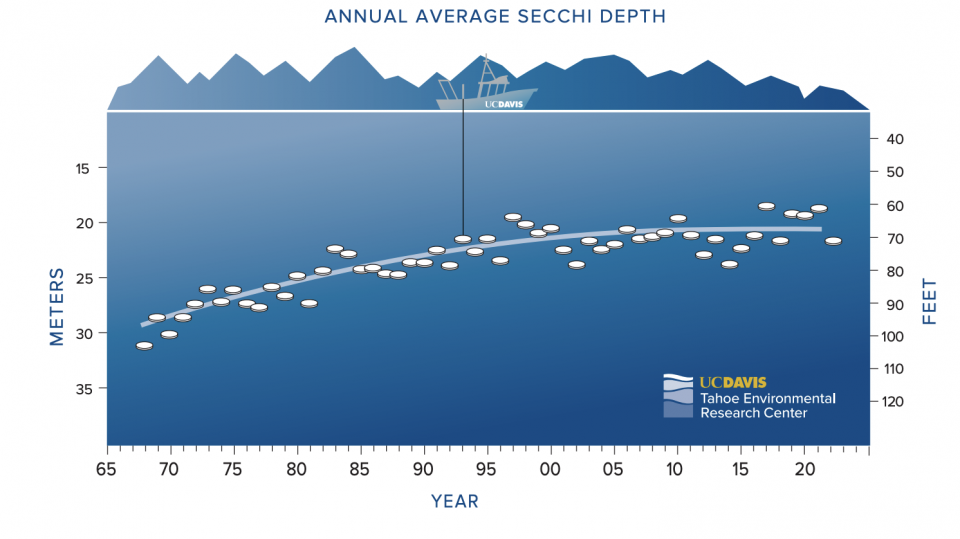Lake Tahoe
Lake Tahoe is one of the world’s most beautiful yet vulnerable lakes. Renowned for its remarkable clarity, Tahoe straddles the Nevada-California border, stretching 22 miles long and 12 miles wide in a granitic bowl high in the Sierra Nevada.
Tahoe sits 6,225 feet above sea level. Its deepest point is 1,645 feet, making it the second-deepest lake in the nation, after Oregon’s Crater Lake, and the tenth deepest in the world.
About 40 percent of the Lake Tahoe Basin’s rain and snow fall directly into the lake, contributing to the lake’s legendary clarity. The rest drains through granitic soils, which are relatively sterile and create a good filtering system.
Formed by uplifting, glaciation and erosion about 2 to 3 million years ago, the Tahoe basin today is ringed with roads, homes, ski resorts, hotels and casinos.
Challenges
Since 1950, the development has measurably increased the runoff of sediment and fertilizers into the lake. Nitrogen and phosphorus stimulate algal growth. Fine particles of sediment also cloud the water as they reflect sunlight. With only one outlet, the Truckee River, the voluminous lake cannot flush itself clean.
Climate change has caused Lake Tahoe to warm earlier in the spring, resulting in cloudier waters. Warmer surface temperatures cause the lake to separate into layers instead of mixing. That keeps algae exposed to the sun, allowing it to grow.
Lake Tahoe’s vitality is also polluted with microplastics at all depths and threatened by invasive species, including billions of tiny shrimp
Restoration Efforts
In 1966, California and Nevada mandated that all sewage be exported out of the basin to prevent a major source of pollution from reaching the lake. Construction of treatment plants needed to export the sewage was completed in 1978.
In 1969, Congress ratified a bistate compact between Nevada and California, creating the Tahoe Regional Planning Agency. The regulatory agency has adopted some of the strictest land-use controls in the country. For example, business owners looking to significantly expand a building must remove pavement or old structures so the runoff can be absorbed.
 A summit led by President Clinton and
Vice President Gore in 1997 helped draw attention — and money –
to environmental problems at the lake.
A summit led by President Clinton and
Vice President Gore in 1997 helped draw attention — and money –
to environmental problems at the lake.
The event built momentum that led to the passage of the 2000 Lake Tahoe Restoration Act and $300 million in funding for Tahoe environmental projects. More than $2 billion in public and private money has since been spent on hundreds of restoration projects around the lake, from new roads and drainage to runoff basins and more transit options.
In 2022, the lake’s clarity reached an average depth of nearly 71.7 feet — more than 7 feet greater than the lowest recorded average of 64.1 feet in 1997 — according to UC Davis’ Tahoe Environmental Research Center.













